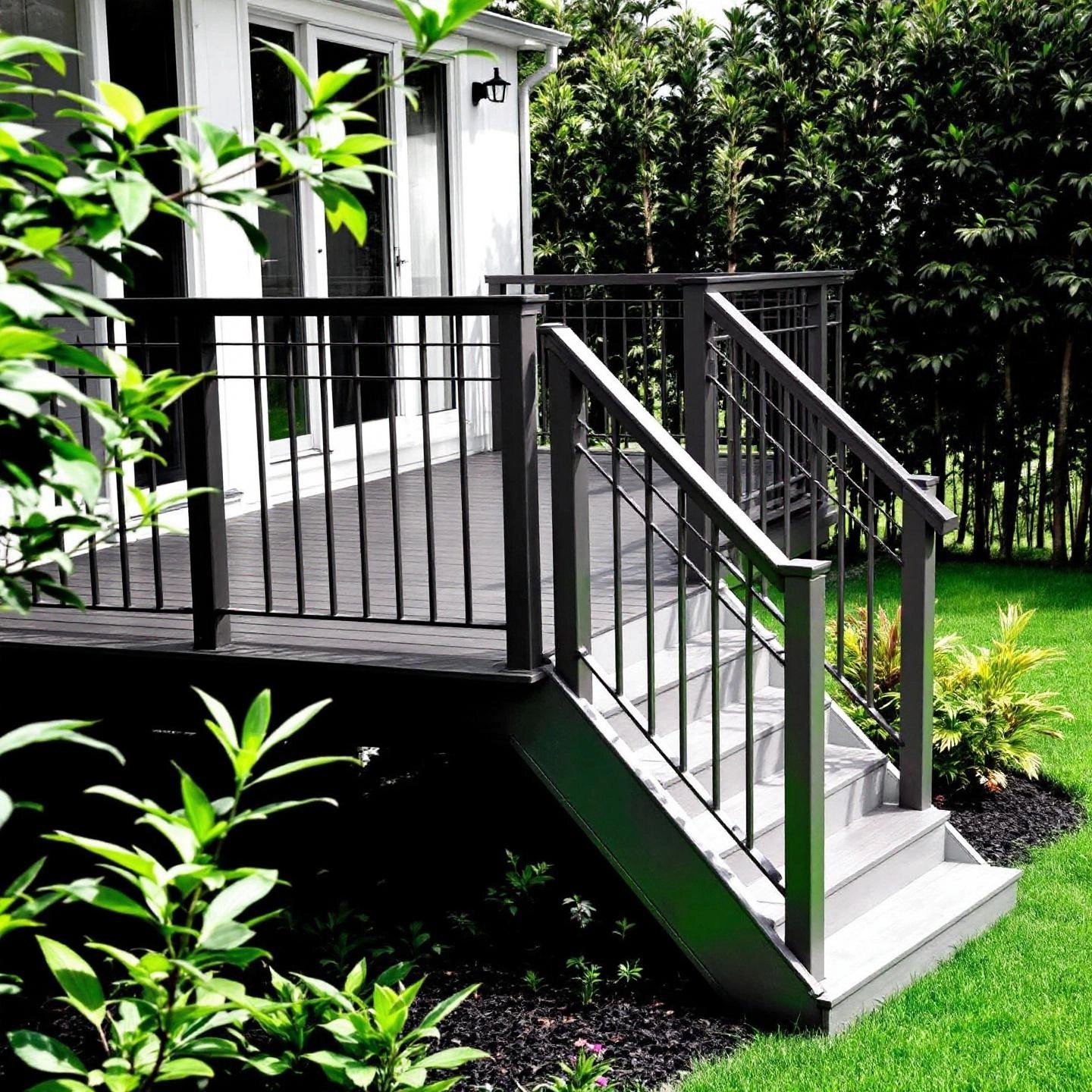
When planning your dream outdoor space, have you ever wondered: "Is there a better option than wood or composite for my deck?" If you’ve spent time researching, you’ll notice a new trend gaining momentum—aluminium decking. As more homeowners and builders seek durable, low-maintenance outdoor living solutions, aluminium is stepping into the spotlight as a superior, modern alternative.
Imagine a deck that stands strong through decades of sun, rain, and temperature swings—without splintering, warping, or demanding constant upkeep. Sounds ideal, right? That’s the promise modern aluminium decking brings to today’s outdoor projects. Unlike traditional timber, which needs yearly staining and is prone to rot, or composite boards that can fade and overheat, aluminium offers a blend of strength, longevity, and style that’s hard to match.
Why are so many turning to aluminium decking? Here are a few key reasons:
But the benefits don’t stop there. As outdoor living spaces evolve from simple patios to multi-functional extensions of the home, the demand for modern decking solutions has never been higher. Homeowners now expect their decks to blend indoor comfort with outdoor durability, support smart lighting, and feature integrated design elements that boost both function and curb appeal.
This comprehensive guide will walk you through everything you need to know about aluminium decking: from its core advantages and how to select the right boards, to innovative design ideas, safety features, and smart budgeting tips. Whether you’re a homeowner envisioning a backyard oasis or a builder looking for the next big thing in deck construction, you’ll find practical, up-to-date advice to help you master your project with confidence.
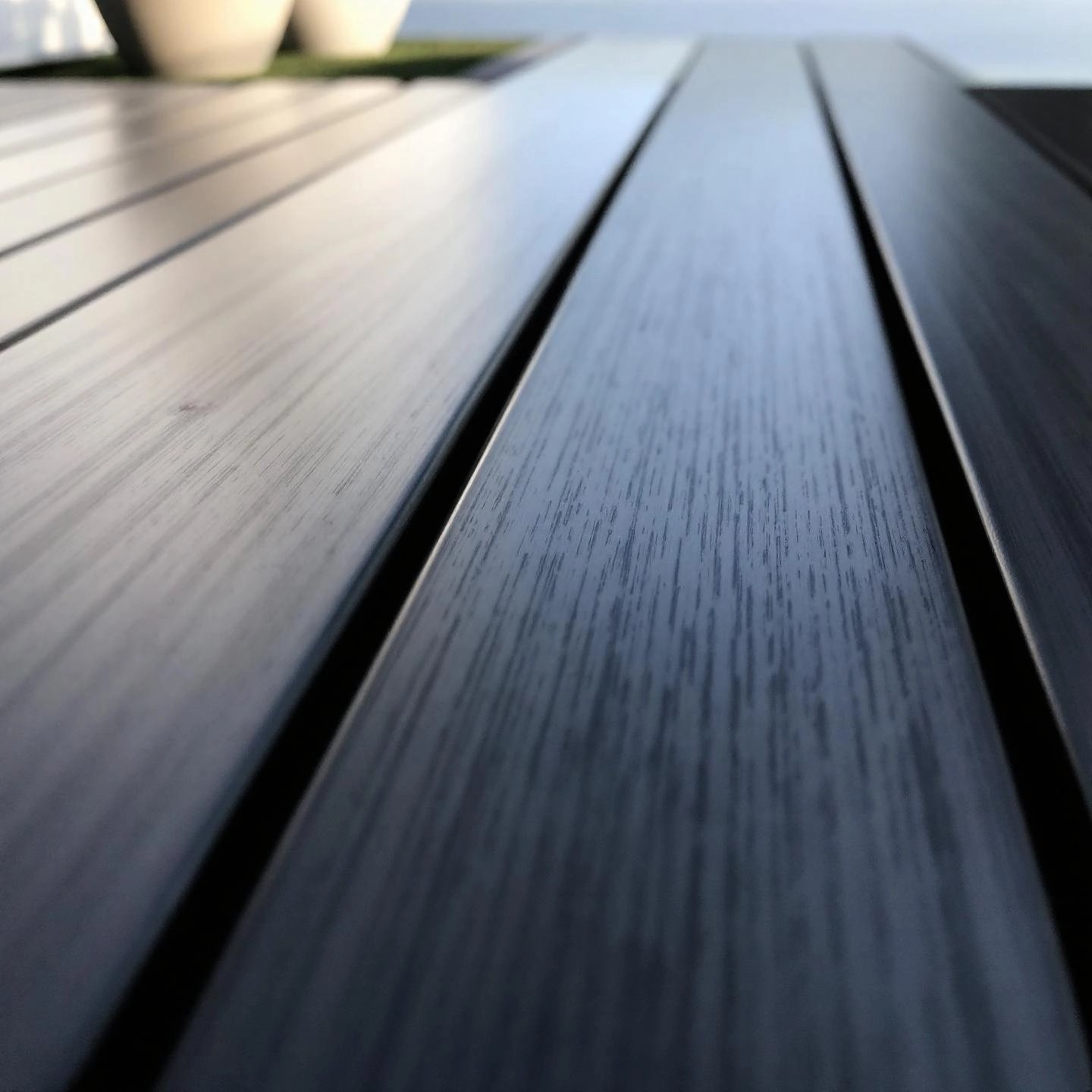
When you picture your ideal outdoor space, you likely imagine a deck that stays beautiful and sturdy year after year—with little effort on your part. But what truly sets aluminium decking apart from wood or composite? Let’s take a closer look at the aluminium decking benefits that make it a leader among low-maintenance decking solutions.
Imagine you’re weighing your options: Should you go with classic timber, popular composite, or modern aluminium? Here’s how aluminium stacks up against the competition in the areas that matter most to homeowners and builders:
| Feature | Aluminium | Composite | Timber |
|---|---|---|---|
| Life Span | 40–60+ years | 10–15 years | 10–15 years |
| Maintenance | Minimal (wash occasionally) | Moderate (cleaning, possible sealing) | High (annual staining, sealing, repairs) |
| Fire Resistance | Excellent (naturally fire-rated) | Variable | Poor (flammable) |
| Slip Resistance | High (textured, water-shedding) | Moderate | Variable (can be slippery when wet) |
| Eco-Friendliness | Infinitely recyclable | Some recyclable elements | Biodegradable but not recyclable |
Choosing aluminium decking means you get a deck that:
With these core benefits in mind, you’re better equipped to decide if aluminium decking is the right fit for your project. Next, let’s explore how to select the best aluminium decking boards to suit your style, budget, and installation needs.
With so many options available, how do you choose the right aluminium decking boards for your project? If the variety of finishes, locking systems, and surface textures sounds complex, don’t worry—you’re not alone. Let’s break down the essential factors to help you confidently select a high-performance aluminium decking system that matches your needs and style.
One of the first decisions you’ll face is which finish best suits your space. Each finish brings its own advantages, both in appearance and performance:
Imagine stepping onto your deck after a rainstorm—will it still feel safe? Surface texture plays a crucial role in slip resistance and comfort. Here’s what you’ll find:
How your boards connect affects both the look and function of your deck. Here are the two most common systems:
| Feature | Powder-Coated | Polyurea-Coated | Mill Finish |
|---|---|---|---|
| Color Range | Limited (3–8 colors) | Wide (up to 8+ colors, custom possible) | None (metallic only) |
| Slip Resistance | Good | Excellent | Basic |
| Comfort | Standard | Superior (cushioned, cooler) | Utilitarian |
| Best Use Case | Residential, light commercial | Luxury, high-traffic, poolside | Marine, industrial |
| Locking Mechanism | Hidden fastener or interlocking | Hidden fastener or interlocking | Varies |
When selecting your ideal aluminium decking system, consider:
“Do your homework, investigate the pros and cons, and look into reviews for different brands on the market. This will ensure you have a deck that gives you years of enjoyment and fits your wants and needs.”
For a truly comprehensive range of high-performance aluminium decking boards—offering superior durability, safety, and versatile design—consider specialized manufacturers like Shengxin Aluminum. Their solutions blend style, sustainability, and advanced engineering, making them a top choice for both residential and commercial projects.
Once you’ve chosen your boards, the next step is to ensure your deck’s foundation is just as strong. Let’s explore why pairing your boards with an aluminium deck frame can make all the difference in longevity and performance.
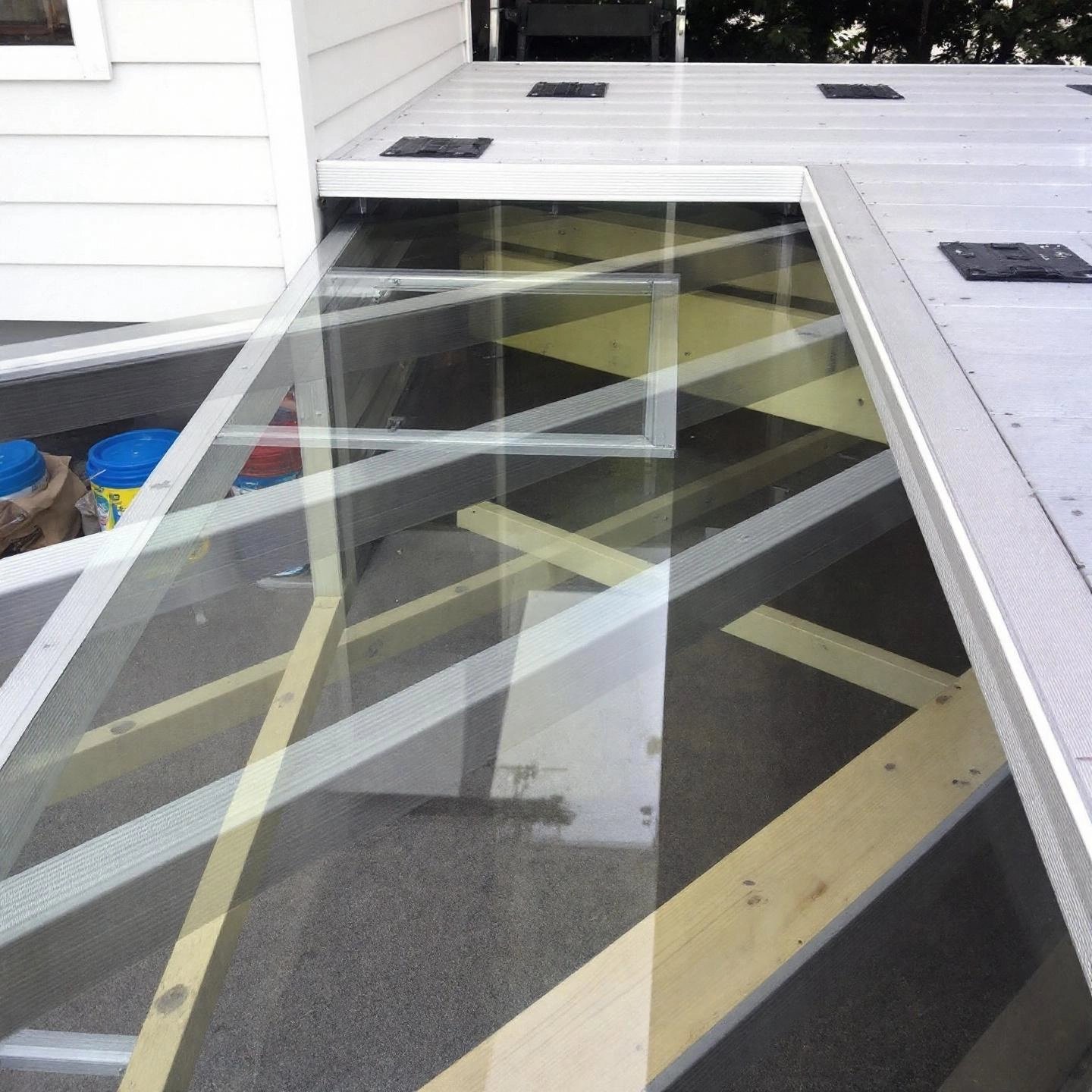
When you picture the perfect deck, do you focus only on the surface? It’s easy to get swept up in board finishes and color choices, but the real secret to a long-lasting deck lies beneath—the frame. Imagine building a beautiful house on a shaky foundation; the same principle applies to your deck. That’s why choosing the right aluminium deck frame is just as crucial as picking the boards themselves.
Most traditional decks rely on pressure-treated lumber for their substructure. At first glance, wood seems like a budget-friendly, familiar option. But have you ever noticed how quickly wooden frames can warp, twist, or even rot—sometimes within a decade? Moisture, insects, and constant temperature swings take a toll on timber, leading to costly repairs or even full replacements far sooner than you’d expect.
Aluminium decking frames, on the other hand, are engineered to last as long as your decking boards—sometimes even longer. But what exactly sets them apart?
In summary, investing in an aluminium deck frame means your outdoor space starts with a foundation engineered for strength, longevity, and minimal upkeep. It’s the backbone of a truly modern, resilient deck—ready to support your chosen boards and any design dreams you have in mind. Next, let’s take a closer look at how the right railing and baluster system can complete your deck’s transformation, both in safety and style.
When you picture your finished deck, do you see only the boards beneath your feet—or do you also imagine the lines that frame your view and keep everyone safe? Choosing the right aluminium deck railing and baluster system is about more than just meeting building codes. It’s about blending safety, aesthetics, and cohesive design for a truly polished outdoor space.
Let’s clear up the basics. The railing is the horizontal structure—usually at the top and sometimes the bottom—that runs between posts. Balusters (often called spindles) are the vertical elements that fill the space between the rails, preventing falls and adding visual rhythm to your deck’s perimeter. While the terms are sometimes used interchangeably, here’s a quick breakdown:
Each component plays a role in both safety and design. Together, they form the framework that protects your family and frames your view.
Imagine a railing that stands up to years of sun, rain, and temperature swings—without rusting, warping, or losing its finish. That’s the promise of aluminium deck railings and balusters. Here’s why they’re a top choice for modern decks:
For homeowners and builders seeking a premium look that lasts, aluminium deck balusters and railings deliver both peace of mind and curb appeal.
Want to personalize your deck’s perimeter? Aluminium railing systems are remarkably versatile. You can choose from several infill options to match your style and maximize your view:
Each infill type has its own maintenance requirements and budget implications. For example, glass and cable systems provide the best visibility but may cost more upfront and require more frequent cleaning.
Safety isn’t just a feature—it’s the foundation of any great deck. Local building codes typically require railings to be 36 or 42 inches high, with balusters spaced so a 4-inch sphere cannot pass through any opening. Aluminium systems are engineered for strength and code compliance, ensuring your deck meets or exceeds all requirements.
Ever struggled to match railing colors or finishes with your decking? Sourcing your aluminium deck railing, balusters, and boards from the same manufacturer ensures a harmonious, professional look. Integration also means:
Manufacturers like Shengxin Aluminum offer a comprehensive range of high-performance aluminium decking and railing systems. Their solutions are designed for seamless integration, delivering both safety and style in one package—ideal for homeowners and builders who want peace of mind and a flawless finish.
In summary, aluminium railing and baluster systems are the smart choice for anyone seeking durability, design flexibility, and easy maintenance. Whether you prefer classic pickets, contemporary cable, or the open feel of glass, you’ll find an option that fits your vision and stands the test of time. Next, let’s explore how black aluminium railings can further elevate your deck’s modern aesthetic and make your outdoor space truly stand out.
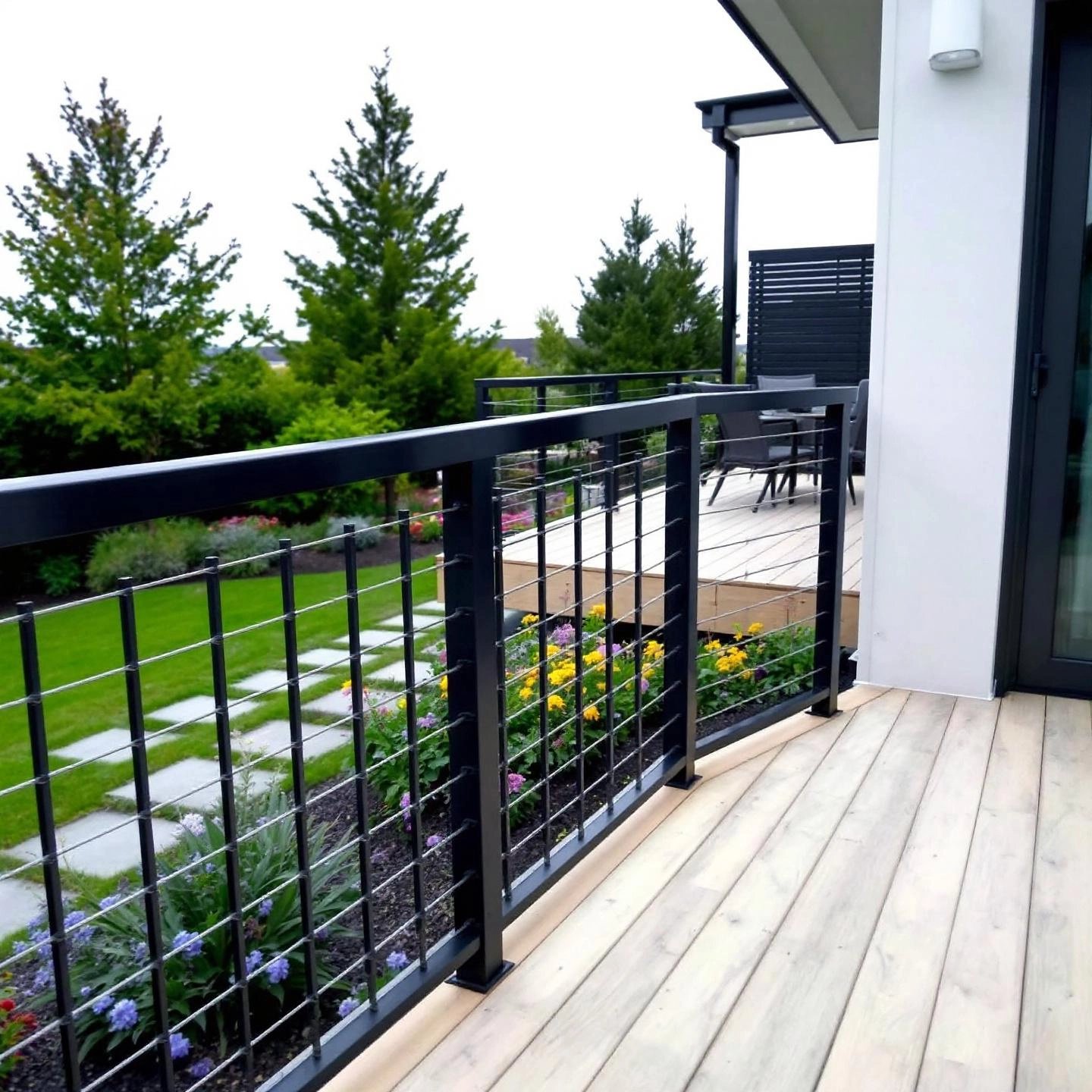
Ever wondered why you keep seeing sleek, dark railings on the trendiest decks and patios? If you’re aiming for a modern deck design that stands out—while still feeling timeless—black aluminium deck railings might be exactly what your project needs. But what makes these railings such a favorite among homeowners and designers?
Picture this: You’re relaxing on your new deck, looking out over a lush backyard or a sparkling pool. Instead of your view being blocked by bulky, light-colored railings, you notice how the black aluminium posts seem to “disappear,” framing your space without stealing the spotlight. This isn’t just a coincidence—it’s a result of thoughtful design and material choice.
Imagine pairing black railings with wide-plank composite decking for a bold, contemporary look, or using them to frame a classic wood deck for a subtle, updated twist. Want to maximize your view? Choose slim black balusters or opt for glass infills. Prefer a touch of drama? Combine black railings with accent lighting for a deck that shines both day and night.
Ultimately, black aluminium deck railings are about more than just following a trend—they’re a practical, stylish, and enduring choice for any outdoor living space. Their ability to blend into both modern and traditional settings, while offering superior durability and minimal upkeep, makes them a top contender for your next project.
Ready to take your outdoor space to the next level? Next, let’s explore how aluminium pool decks leverage these same qualities for safety, comfort, and standout design around the water.
When you imagine stepping out of the pool on a hot summer day, what do you want under your feet? A surface that’s cool, safe, and worry-free—or one that’s hot, slippery, and full of splinters? If you’re considering a new aluminium pool deck, you’re already on the path to a smarter, safer, and more enjoyable backyard retreat.
Poolside environments are tough on traditional decking materials. Constant exposure to water, chlorine, and sunlight can cause wood to rot, warp, or splinter, while composites may fade, become slippery, or even overheat. That’s where waterproof aluminium decking stands out as a modern solution built for the demands of pool life.
Here’s why aluminium is the ideal choice for your pool deck:
Picture hosting a summer gathering: kids splashing in the pool, adults lounging with drinks, and everyone moving effortlessly from water to deck. With aluminium, you don’t have to worry about water puddling, deck boards getting too hot, or anyone slipping and injuring themselves. Plus, the sleek, modern look of aluminium complements contemporary pools as well as classic backyard retreats.
So, if you’re designing a poolside oasis that’s built to last, prioritizes safety, and minimizes maintenance, aluminium decking is a choice you—and your bare feet—will appreciate for decades. Up next, let’s see how these same qualities make aluminium a standout for boats, docks, and trailers, where strength and weather resistance are non-negotiable.
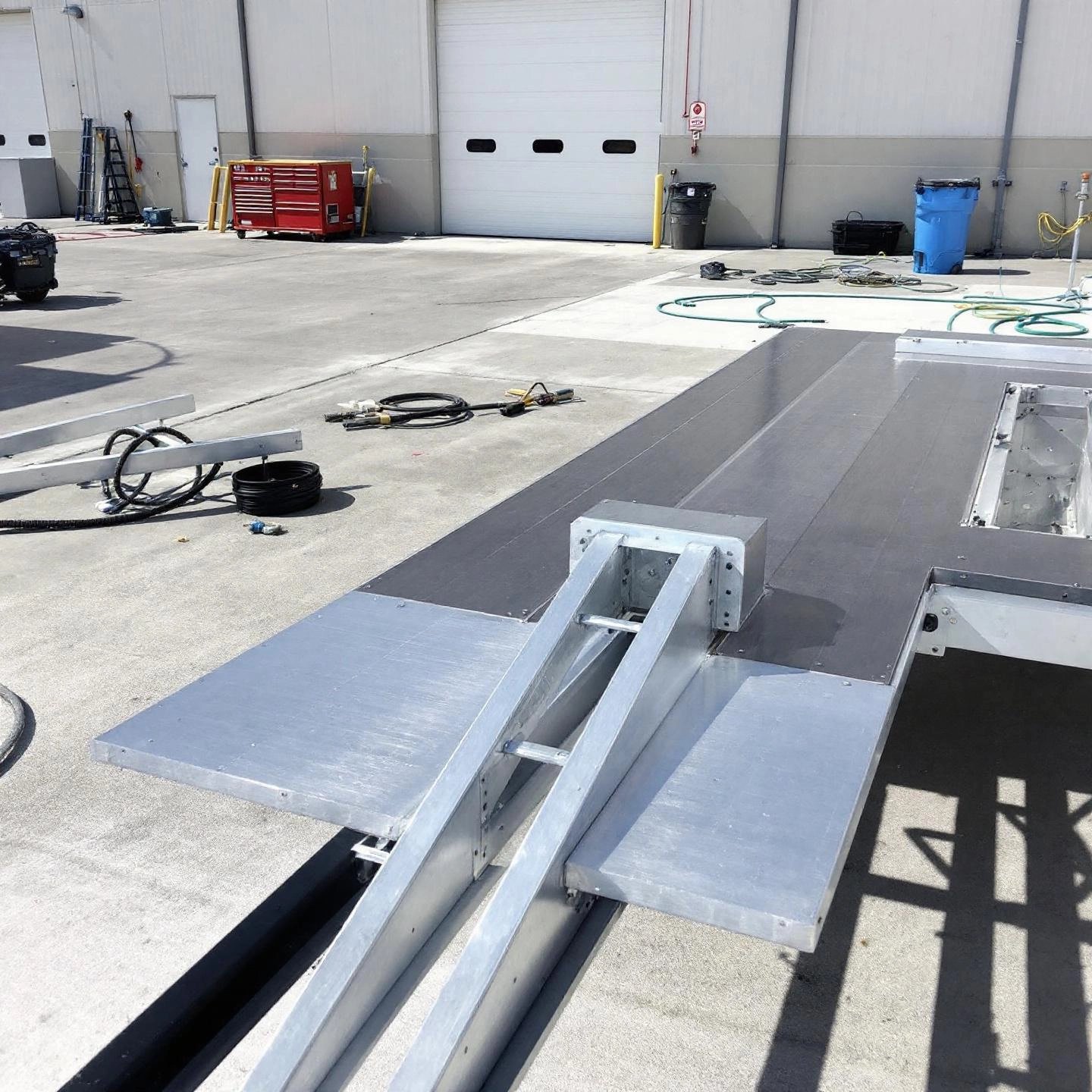
Ever wondered why aluminium trailer decking and aluminium deck boats are so popular in demanding environments? When your project needs to withstand the relentless effects of water, salt, and heavy loads, not just any material will do. Let’s explore why aluminium stands out as the go-to choice for marine and vehicle applications, offering unique advantages that traditional wood or steel simply can’t match.
Imagine your boat or trailer exposed to rain, road salt, or even the harsh spray of seawater. Over time, many materials break down—wood rots and warps, steel rusts, and even composite boards can show wear. Aluminium, especially in marine-grade alloys, is engineered to thrive in these environments. Here’s what sets it apart:
Let’s break down where aluminium decking shines in real-world use:
| Application | Key Benefits |
|---|---|
| Aluminium Trailer Decking |
|
| Aluminium Deck Boats & Docks |
|
Not all aluminium is created equal, especially for marine or trailer use. For the best results, look for marine-grade alloys like 5083, 5086, and 5456 for boats and docks, and robust, corrosion-resistant grades for trailers. These alloys are specifically engineered to handle the stresses of water exposure, vibration, and heavy loads.
In summary, whether you’re upgrading a trailer, building a dock, or outfitting a boat, aluminium decking delivers the durability, strength, and corrosion resistance you need for peace of mind—on the road or on the water. Next, let’s take a closer look at the cost equation and see how aluminium’s long-term value stacks up against other materials for your project.
When you start planning a new deck, do you ever wonder, “Is the higher upfront aluminium decking price really worth it?” It’s a common question—and one that deserves a closer look. While aluminium may carry a premium compared to wood or even composite, the real story unfolds when you consider the total cost of ownership decking over the long haul. Let’s break down what you’ll actually spend—not just on day one, but over the life of your deck.
Imagine you’re building a 320-square-foot deck—large enough for entertaining, but not overwhelming. Here’s what you can expect to pay for materials and professional installation, based on current reference pricing:
| Material | Initial Cost (per sq ft, installed) | Total Initial Cost (320 sq ft) |
|---|---|---|
| Aluminium | $30 – $50 | $9,600 – $16,000 |
| Composite | $30 – $60 | $9,600 – $19,200 |
| Pressure-Treated Wood | $15 – $25 | $4,800 – $8,000 |
At first glance, wood seems like the budget-friendly winner. But as you’ll see, initial price is only part of the equation.
Deck ownership doesn’t end after installation. Imagine spending weekends sanding, staining, or replacing warped boards—year after year. Here’s how annual maintenance stacks up:
Maintenance costs for wood can easily add $300–$600 per year, while composite and aluminium typically stay under $100 annually for cleaning supplies and minor touch-ups.
Don’t forget: Replacing a deck means paying for removal and disposal, plus the cost of new materials and labor—potentially doubling your original investment over time.
| Material | Initial Cost (320 sq ft) | Maintenance (20 yrs) | Replacement (if needed) | Total 20-Year Cost |
|---|---|---|---|---|
| Aluminium | $12,800 | $1,000 | $0 | $13,800 |
| Composite | $14,400 | $2,000 | $0 | $16,400 |
| Wood | $6,400 | $10,000 | $6,400 (full replacement after 10 yrs) | $22,800 |
Note: All figures are approximate and based on reference data for a 320 sq ft deck. Your actual costs may vary depending on local labor rates, climate, and maintenance habits.
Looking for a solution that combines all of these advantages? Shengxin's Durable Aluminium Decking is engineered for lasting performance, safety, and style. With a premium 6063-T6 alloy, top-tier fire rating, and a non-slip surface that exceeds safety standards, Shengxin’s boards eliminate recurring maintenance and replacement costs while delivering a sophisticated, eco-friendly finish. For architects, contractors, and homeowners alike, this means a lower total cost of ownership—and a deck that stands the test of time, both in durability and design.
As you plan your project, remember: the true value of aluminium decking lies not just in its upfront price, but in decades of worry-free enjoyment and savings. Next, let’s wrap up with a summary of key takeaways and how to confidently move forward with your aluminium decking project.
When you step back and look at the full picture, what matters most for your deck—longevity, safety, style, or sustainability? With premium aluminium decking, you don’t have to choose just one. Imagine a space that looks stunning year after year, stays cool and safe underfoot, and requires almost no maintenance. That’s the real value aluminium brings to modern outdoor living.
So, how do you move from inspiration to action? Start by assessing your project’s unique needs: Is safety your top priority? Do you want a deck that stays beautiful with little effort? Or are you aiming for a sustainable, eco-friendly solution that adds value to your property?
For those ready to invest in a deck that delivers on every front, consider partnering with a reputable supplier like Shengxin Aluminum. Their range of durable, high-performance aluminium decking boards and integrated railing systems are engineered for both beauty and resilience—making them a top choice for homeowners, architects, and builders who demand the best.
“A well-chosen aluminium deck is more than an upgrade—it’s a legacy of comfort, safety, and sustainability for years to come.”
With the right information and the right materials, you’re empowered to create an outdoor space that stands the test of time. Whether you’re planning a new build or a renovation, premium aluminium decking offers a future-proof foundation for outdoor living—one that you’ll appreciate every season, year after year.
Aluminium decking offers exceptional durability, lasting 40 years or more with minimal maintenance. It resists rot, warping, and pests, is naturally fire-rated, and provides excellent slip resistance. Unlike wood, aluminium does not require staining or sealing, and unlike many composites, it stays cooler and is fully recyclable, making it a sustainable, low-maintenance choice for outdoor spaces.
Yes, aluminium decking excels in wet and poolside settings due to its waterproof and chlorine-resistant properties. Its textured surfaces enhance traction for barefoot safety, and it dissipates heat quickly, staying comfortable underfoot even in direct sunlight. The material's resistance to splintering and easy cleaning make it ideal for pool decks and other high-moisture areas.
While aluminium decking may have a higher initial cost, it typically offers a lower total cost of ownership over 20 years. With virtually no maintenance expenses, no need for replacement, and long-lasting performance, aluminium can save thousands compared to wood (which requires regular upkeep and often full replacement) and even outperforms composite in overall value.
Aluminium decking comes in various finishes, such as powder-coated, polyurea-coated, and mill finish, each offering different looks and slip resistance. Color choices range from classic metallics to modern hues like black. Design flexibility extends to railing systems, with options for picket, cable, or glass infills, and the ability to coordinate boards and railings for a cohesive, modern aesthetic.
Sourcing your aluminium decking boards, frames, and railings from a single manufacturer, such as Shengxin Aluminum, ensures seamless integration, consistent finishes, and easier installation. Shengxin’s products are engineered for durability, safety, and sustainability, providing a high-performance, low-maintenance solution that meets modern building standards and design goals.
 Servicio en línea
Servicio en línea 0086 136 3563 2360
0086 136 3563 2360 sales@sxalu.com
sales@sxalu.com +86 136 3563 2360
+86 136 3563 2360